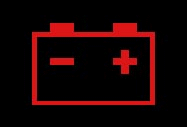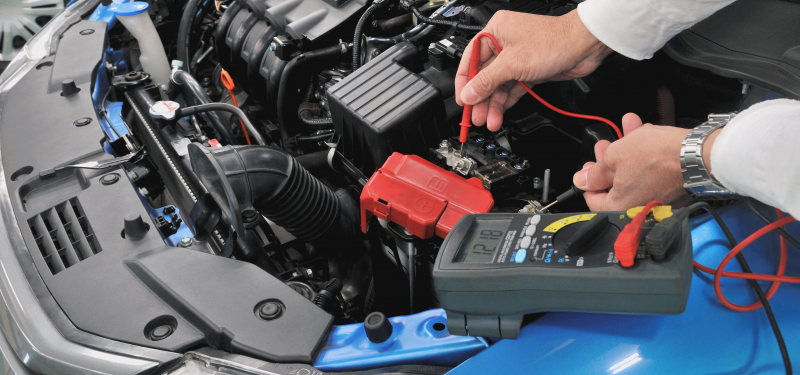What does the battery light mean?

Your car’s battery is responsible for starting your car and powering the radio, speakers, heater fan and other accessories. If it runs flat, your car will need jump-starting. Your battery’s alternator charging system provides the battery with an ongoing source of power while the engine is running , allowing it to recharge itself.
The battery light is often a red light that can appear on your car’s dashboard. Its purpose is to warn the driver that there is a problem with the battery or charging system.
What causes the battery light to turn on?
The battery light on the dashboard typically indicates a problem within the vehicle’s charging system. When the battery light turns on, it suggests that the battery is not receiving sufficient charge or that there is an issue with the charging system components. Here are some common causes of the battery light illuminating:
- Faulty Alternator: The alternator is responsible for generating electrical power and recharging the battery while the engine is running. If the alternator fails or malfunctions, it may not provide an adequate charge to the battery, causing the battery light to turn on.
- Loose or Damaged Belts: The alternator is driven by a belt connected to the engine. If this belt becomes loose, worn, or damaged, it can affect the operation of the alternator and lead to insufficient charging. In such cases, the battery light may illuminate.
- Wiring Issues: Faulty wiring connections or damaged wiring harnesses between the alternator, battery, and other charging system components can disrupt the flow of electricity. This can result in a lack of proper charging and trigger the battery light.
- Faulty voltage regulator: The voltage regulator controls the amount of current that flows from the alternator to the battery and therefore the battery voltage. If the voltage regulator fails, your battery will not be provided with the correct amount of energy. A faulty voltage regulator can either cause under charging or over charging of your car battery.
- Battery Problems: While the battery itself may not directly cause the battery light to turn on, a weak or failing battery can put additional strain on the charging system. The battery may not hold a charge or may have internal issues, affecting the overall charging performance.
- Corroded/dirty battery terminals: Corrosion on the battery terminals can limit the amount of current that the battery is able to provide or accept. Corrosion can usually be removed from the battery easily with warm water and baking soda, allowing it to work normally again.
How serious is this issue?
If your battery light is on, then you have a limited amount of emergency driving time to either get your vehicle home, or to your trusted local garage. This is because your battery will not be able to charge correctly.
If you drive with your battery light on you will normally start to experience the car starting to lose power and running rough before it eventually stalls and will not start again.
The more electrical loads you have on such as headlight, heater fan, demisters, wind screen wipers and so on, the faster the car will stall and not restart, leaving you stranded.
What to do if the battery light comes on while driving?
If the battery light comes on while you are driving, it is important to take immediate action to address the issue and prevent potential problems. Here’s what you should do:
- Safely Pull Over: When it is safe to do so, find a suitable location to pull over, away from traffic. It’s crucial to prioritize your safety and the safety of other road users.
- Turn Off Non-Essential Electrical Systems: To conserve the remaining electrical power in the battery, turn off any non-essential electrical systems, such as the radio, air conditioning, and headlights. This can help prevent further draining of the battery.
- Check Battery Connections: While the engine is turned off, open the hood and visually inspect the battery connections. Ensure that they are clean, tight, and free from corrosion. Loose or corroded connections can contribute to charging system issues. If necessary, carefully clean the battery terminals and tighten any loose connections.
- Restart the Engine: After checking the battery connections, attempt to restart the engine. If the battery light remains illuminated, it indicates an ongoing issue with the charging system.
- Avoid Driving Long Distances: If the battery light stays on, it is advisable to avoid driving long distances as the battery may not be receiving sufficient charge. Operating the vehicle without proper charging can lead to a drained battery and potential stalling or loss of power.
Battery Light Diagnostics in Hamilton
Is your battery warning light on? At Grimmer Motors, we can diagnose and fix problems in your battery and charging system. This will allow for the battery to hold its charge, preventing your car from dying when you need it the most.
Generally, this could involve an alternator replacement, battery replacement or other changes to your car’s charging system. Regardless of what is needed, our mechanics will be in touch with you to discuss the problem before commencing any sort of replacement service.
For helpful, friendly, honest battery and alternator/charging system repairs in Hamilton, contact Grimmer Motors today!

